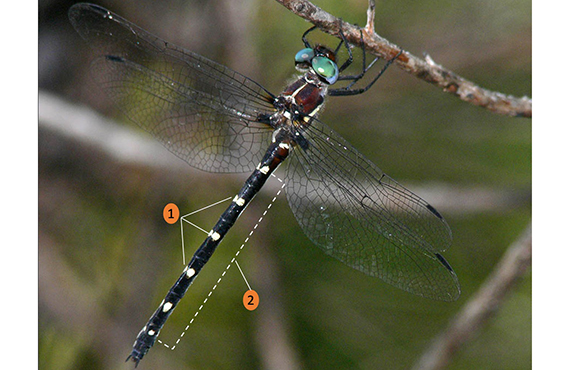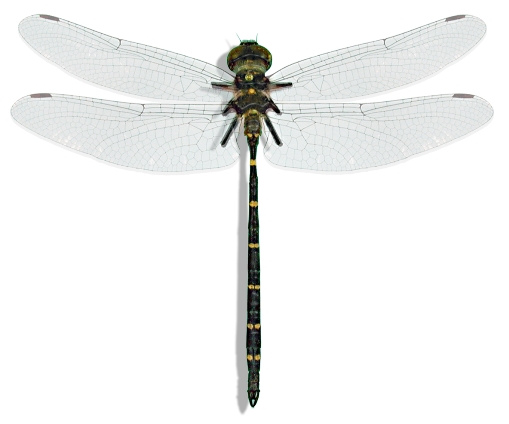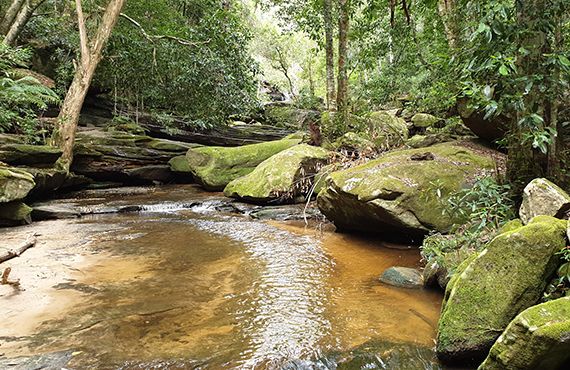
Adam's Emerald Dragonfly
Scientific name
Archaeophya adamsi
Status in NSW
Endangered
Characteristics
The Adam's Emerald Dragonfly (also called Horned Urfly) is a moderately large dragonfly. Larvae are distinguished by a large two-lobed frontal plate on the head.
Adults are distinguished by:
- Large brown-black body with yellow markings
- A slight green or bluish metallic reflection on some parts
Species similar in appearance
Other dragonfly species.
Size
Larvae grow to around 23 mm. Adults abdomen length is around 46 mm and wingspan around 75 mm
Distribution
Adam’s Emerald Dragonfly is one of the rarest dragonflies in the country. It breeds in rivers and streams in coastal areas. In the past 35 years it has been collected from only four sites in the Greater Sydney region.
Habitat
Adam’s Emerald Dragonfly larvae occur in narrow shaded riffle zones with moss and abundant river bank vegetation in small to moderate sized creeks with gravel or sandy bottoms.
Adults commonly fly away from the water to mature before returning to breed.
Why is the Adam’s Emerald Dragonfly threatened?
- Removal of river bank vegetation, land clearing, drainage works and road crossings all increase sedimentation which degrades habitat and smothers larval riffle habitat
- Water pollution from urban, industrial and agricultural development in the catchment
- Severe weather events such as droughts and bushfires.
- Extremely low rate of natural recruitment due to low population sizes and long larval periods
- Local extinctions could greatly affect the survival of the species as a whole






